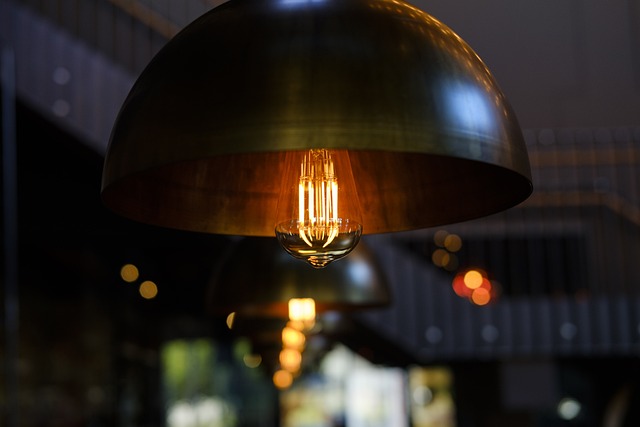These fixtures are present in the majority of the places people spend time in today, so you’ll run into them everywhere. Have you ever wondered how much do LED lights cost?
Standard LED bulbs for LEDs range in price from $5 to $20, while downlights cost between $50 and $75. The price of LED lighting depends on your specific situation, such as whether you’re replacing your existing lightbulbs with LEDs or your LED fixtures.
According to the Australian Energy Foundation, upgrading both the bulb and the transformer can cost between $5 and $20 for a standard LED bulb and between $50 and $75 for a variety of LED downlights.
The price of the bulb itself increases linearly with the wattage (W) of the bulb, as one might expect.
Please read on.
Terminology Explained
Energy lingo is often unclear. The information you need to use our calculator is broken down below.
What Are Watts?
The rate at which electricity flows through a device is measured in watts. When it comes to LEDs, more watts equate to more electricity, which typically results in bigger bulbs and brighter lights.
You should multiply the current (measured in amps) by the voltage (measured in volts) to determine the wattage of an LED light. Examining the packaging of your lightbulb is the best way to determine amps and volts with accuracy. From there, multiplying amps by volts and dividing by 1000 yields kilowatts.
Kilowatts = (Amps x Volts) / 1000
What Are Lumens?
Lumens is another key word to understand in the lighting world. Lumens are units used to quantify light brightness. Brighter lights imply higher lumen counts. Although there is no direct correlation between lumens and watts, typically more lumens also means more watts. So, even though it might be useful to know your LED’s lumens in order to get a sense of how bright it will be in comparison to other bulbs, you don’t need to measure lumens in order to calculate the power required to run your bulb.
What is the Average Cost of Electricity?
The average price of electricity in the United States, according to the US Energy Information Administration is 13 cents/kWh. Your electricity provider may alter this amount, though. In some states today, residents can compare electricity prices and choose the one with the best deal.

How Much Does It Cost to Install LED Lights?
Or rather:
What additional expenses are there in addition to the purchase?
You must be curious about the answers.
Don’t you?
So, walk with me to the end as I tell you everything you need to know about LED lights cost.
Now:
These days, most people who’ve been using incandescent lights and CFLs are shifting to LEDs.
For that reason, LED lights are becoming so popular.
But:
Do you need to switch to LED as well? Are they worthwhile?
So:
Before we get down to the costs, let’s see some of the reasons why you should change your lighting to LED.
Advantages of LED Lights
Long life: Without a doubt, LEDs are more durable than CFL and incandescent bulbs. This is due to the materials they are made of and the method by which they produce light. The bulbs produce less heat than their equivalent incandescent and CFL bulbs. As a result, the majority of LED bulbs can last for over 25,000 hours and will meet your needs.
Energy efficiency: As mentioned, LED lights use very little heating compared to CFLs and incandescent bulbs, so the majority of the energy is frequently converted into light. These fixtures subsequently result in significant energy savings.
High brightness: LED lights are able to produce bright light even though they use less energy. In order to use fewer bulbs, they produce a more concentrated glow. Additionally, this reduces energy usage.
Wide variety of colors: The large selection of colors that LED lights can provide is another factor in their rising popularity. You can easily get it in any color you want, whether you want it to be pure white, green, blue, red, or pink.
Low heat: As previously mentioned, LED lights convert the majority, if not all, of the energy they receive directly into light with little heating. This not only makes them more energy-efficient, but also safer than other lighting technologies. Additionally, because they illuminate a room without necessarily raising temperatures, this makes them ideal for heat-sensitive areas.
Instant lighting: Have there ever been times when you turned on a light and needed to wait a while before it was sufficiently lit? That might be irritating. Well, LED lights prevent it from happening. When you flip the switch, they will immediately turn ON and reach maximum brightness because they don’t need to warm up.
They are reliable: Some LED bulbs can withstand moisture and function well in cold climates. They can also easily withstand sudden impacts because they lack filaments and delicate parts. And that makes them stable, durable, and reliable.
So:
Only a few of the advantages of LED lighting are listed above.
Anyway:
It’s all about the costs in this article.
So, exactly what are you going to buy with your money?
Well, if you are wondering the same thing, here are a few examples of costs that may need your consideration:
- Initial Costs
- Transportation Costs
- Location/Planning/Preparation Costs
- Installation Costs
- Maintenance Costs
- Electricity Costs
- Other Costs
Let’s examine each one individually.
How Do LED Lights Work?
LEDs, also known as light-emitting diodes, are semiconductor light sources that release light when a current flows through them. They have undergone modernization over the years, which has made them high output and, consequently, suitable for both indoor and outdoor lighting.
If you love chandeliers but have recessed lights in your home, we’ll show you how to convert a recessed light to a pendant.
What Types of LED Lights Are There Available?
Warm White and Cool White are just a couple of the color temperatures that are offered for LED lights. Due to their calming and warming light, Warm White bulbs are ideal for indoor lighting. They produce a similar light to regular halogen bulbs. Alternatively, Cool White is much lighter and might be the best choice for ensuring brightness, for instance, above a kitchen counter or when attempting to brighten an outdoor space.
Conclusion on the Cost of LED Lights
Standard LED bulbs cost between $5 and $20, while downlights run between $50 and $75.
Whether you use LED lights to replace existing bulbs or LED accessories can affect how much LED lighting costs in your specific environment.
Savings will be much more noticeable if you switch from halogen to LED than if you switch from incandescent to LED bulbs. However, even if you already have CFLs or other energy-efficient lighting, there are still some significant savings to be had. Whatever your motivation for choosing LED bulbs, you will almost certainly be able to get a respectable return on your investment, if not right away, then over the course of their expected lifetime.
For reading, I’m grateful.



